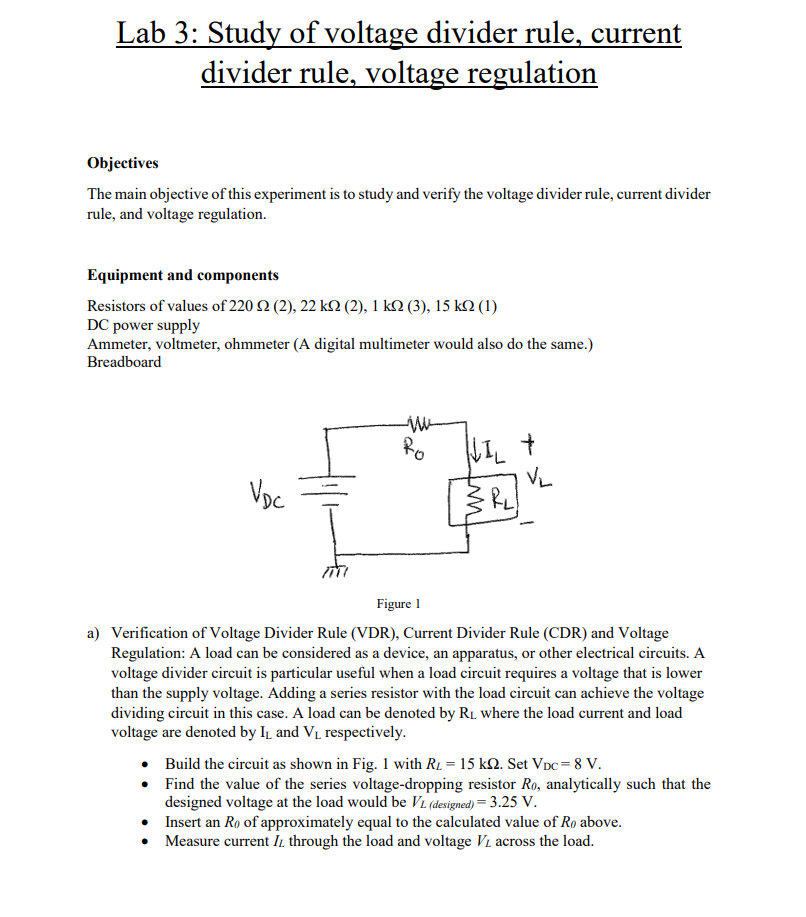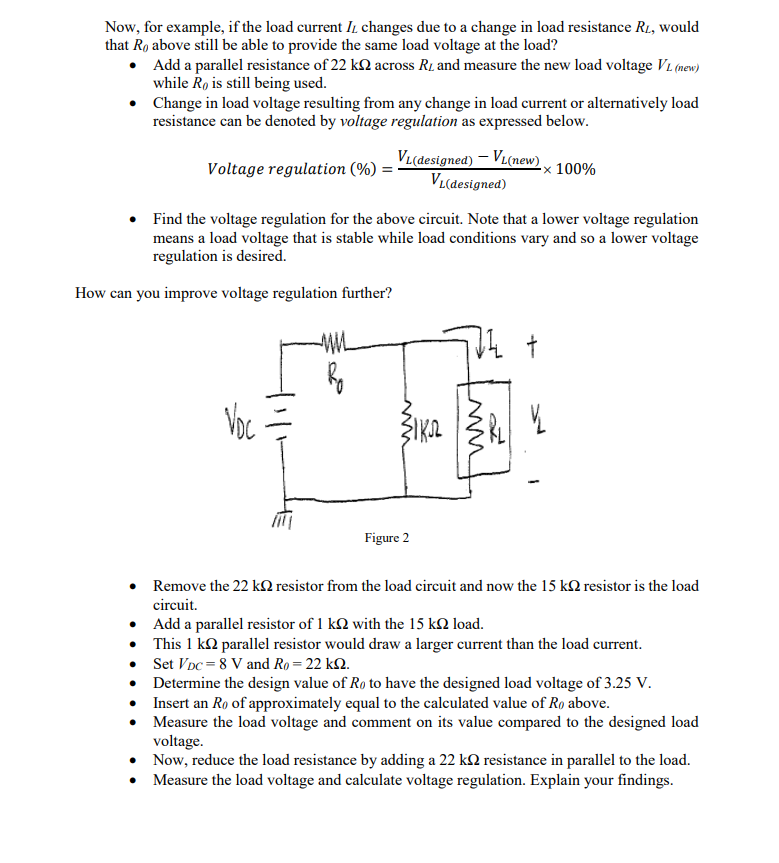Home /
Expert Answers /
Electrical Engineering /
lab-3-study-of-voltage-divider-rule-current-divider-rule-voltage-regulation-objectives-the-main-pa641
(Solved): Lab 3: Study of voltage divider rule, current divider rule, voltage regulation Objectives The main ...



Lab 3: Study of voltage divider rule, current divider rule, voltage regulation Objectives The main objective of this experiment is to study and verify the voltage divider rule, current divider rule, and voltage regulation. Equipment and components Resistors of values of DC power supply Ammeter, voltmeter, ohmmeter (A digital multimeter would also do the same.) Breadboard Figure 1 a) Verification of Voltage Divider Rule (VDR), Current Divider Rule (CDR) and Voltage Regulation: A load can be considered as a device, an apparatus, or other electrical circuits. A voltage divider circuit is particular useful when a load circuit requires a voltage that is lower than the supply voltage. Adding a series resistor with the load circuit can achieve the voltage dividing circuit in this case. A load can be denoted by where the load current and load voltage are denoted by and respectively. - Build the circuit as shown in Fig. 1 with . Set . - Find the value of the series voltage-dropping resistor , analytically such that the designed voltage at the load would be . - Insert an of approximately equal to the calculated value of above. - Measure current through the load and voltage across the load.
Now, for example, if the load current changes due to a change in load resistance , would that above still be able to provide the same load voltage at the load? - Add a parallel resistance of across and measure the new load voltage while is still being used. - Change in load voltage resulting from any change in load current or alternatively load resistance can be denoted by voltage regulation as expressed below. - Find the voltage regulation for the above circuit. Note that a lower voltage regulation means a load voltage that is stable while load conditions vary and so a lower voltage regulation is desired. How can you improve voltage regulation further? - Remove the resistor from the load circuit and now the resistor is the load circuit. - Add a parallel resistor of with the load. - This parallel resistor would draw a larger current than the load current. - Set and . - Determine the design value of to have the designed load voltage of . - Insert an of approximately equal to the calculated value of above. - Measure the load voltage and comment on its value compared to the designed load voltage. - Now, reduce the load resistance by adding a resistance in parallel to the load. - Measure the load voltage and calculate voltage regulation. Explain your findings.
Report: a) Discuss the results of the experiments. b) Compare the results with the theoretical results, where appropriate, by solving the circuit theoretically.
Expert Answer
a) The results of the experiments can be discussed as follows:1. Verification of Voltage Divider Rule (VDR) and Current Divider Rule (CDR):- The circuit was built with RL = 15k? and VDC = 8V.- The series resistor R0 was calculated analytically to ach...